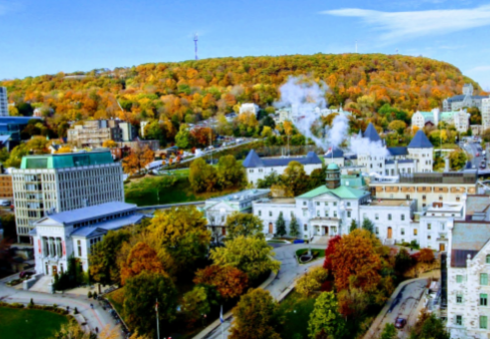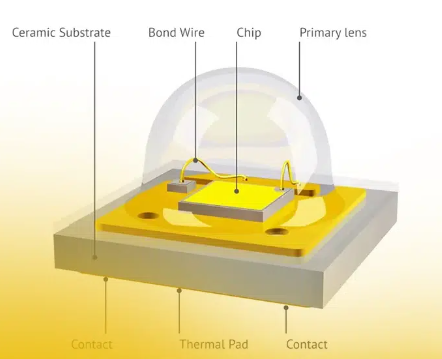- Ameya360 Component Supply Platform >
- Trade news >
- AMEYA360:NanoLED Research Exploits Northern Roots
AMEYA360:NanoLED Research Exploits Northern Roots
NS Nanotech’s recent opening of a research and development center in Montreal represents a homecoming of sorts, as the company’s technology is based on research conducted at McGill University.
NS Nanotech Canada will take advantage of exclusive licenses to a portfolio of groundbreaking patents owned by McGill as part of its advanced research efforts to support commercialization of next-generation nanoLED technologies for televisions, mobile phones, smartwatches, augmented-reality headsets and other applications, the company said in prepared remarks.
In an interview with EE Times, NS Nanotech CEO Seth Coe-Sullivan said the R&D center is a critical enablement of the company’s long-term mission to develop the world’s first efficient submicron-scale nanoLEDs.
NS Nanotech, which is based in Ann Arbor, Michigan, has created samples of submicron-sized LEDs in its laboratory research that are radically smaller than any other LEDs available in the world today—these submicron nanoLEDs are much smaller than a strand of human hair, at less than one micron. By comparison, today’s “miniLEDs” are generally between 100 and 200 microns, while new “microLEDs” are smaller than 100 microns.Coe-Sullivan said McGill is a global center of excellence in nanotechnologies that will help NS Nanotech overcome the cost and performance limitations of 20th century technologies.

The McGill University campus in Montreal (Source: Neale McDevitt/McGill University)
“What happens to conventional technology is you make the LED smaller, and the efficiency gets smaller as well,” he said. “That’s where a nanoLED comes in.” By building the LED from the nano up, no efficiency is lost. “The efficiency versus size curve is very favorable.”
NS Nanotech’s strategy since its founding was to be “capital light,” despite being in the capital-intensive semiconductor industry, Coe-Sullivan said. “Raising a lot of capital is great. You get to buy a lot of shiny new toys.” But as much as engineers love their toys, he added, it’s not desirable from a financial point of view. “It’s a big hole to be digging yourself.”
By collaborating with universities like McGill and the University of Michigan, NS Nanotech can send its engineers to the necessary equipment, such as a molecular beam epitaxy (MBE) chamber, rather than making huge capital investments, Coe-Sullivan said. “We scoured the world for that.”
The company was already a licensee of McGill IP and technology, which meant it already had a formal relationship with the university and its technology transfer office.
Derrick Wong, COO of NS Nanotech, played a key role in the original technology transfer license. It’s fitting that he’s back in the picture at NS Nanotech after retiring from McGill, as he knows many of the people at NS Nanotech. This includes some who are repatriating back to Canada for the R&D center, such as senior research scientist David Laleyan, a McGill graduate who received his Ph.D. from the University of Michigan in 2020.
David Laleyan, senior scientist at NS Nanotech Canada (left); Derrick Wong, COO of NS Nanotech Canada (center); and McGill University professor Songrui Zhao (right) work with nanoLED fabrication equipment at Professor Zhao’s research laboratory.
“Although we started this officially in November, people have been working together on this project in various forms for the last nine years,” Wong said in the same interview with EE Times. “McGill University has been very supportive. It still views NS Nanotech as a McGill startup, even though it’s located in Ann Arbor. It’s very much a McGill success story.”
Also collaborating with NS Nanotech is Songrui Zhao, assistant professor in the Department of Electrical and Computer Engineering at McGill University, whose research is contributing to solving the challenges related to nanoLEDs. Over the past few years, McGill has been working with MBE, which is a material growth technique to grow nanowires for very small-scale LEDs and lasers because nanowires provide better material quality, Zhao said in the same interview with Coe-Sullivan and Wong. “If you are using this molecular beam epitaxy technique to grow nanowires, it’s very, very unique, and there are not many players.”
Zhao added that a chief benefit of conducting this research in a university environment is that there’s a lot of frank interaction with students to discuss many different ideas. “We are not driven by revenue,” he said. University/industrial partnerships can accelerate the technology development and facilitate international connections. “One team cannot solve all the problems.”
While McGill can handle MBE, materials and even initial device development, Zhao said testing and scaling up requires more resources beyond the university—be it people or equipment.
Coe-Sullivan said the immediate goal is to grow the team in Montreal to work with the research equipment available there. “At McGill, we’ve got access to great research tools, but they’re research tools. These are not places where we’re ever going to mass-produce a product or be able to truly scale a technology.”
He said NS Nanotech is talking to foundries that have the same type of equipment, but at a much larger scale and throughput to be able to bring its product all the way to market through partnerships and contract manufacturing. “We’ve got access to foundries here in North America that can take this all the way to the end market.”
In late April, NS Nanotech Canada announced it received matching funding support from McGill University’s Office of Innovation & Partnerships to accelerate the commercialization of its nanoLED technologies.
Online messageinquiry
- Week of hot material
- Material in short supply seckilling
| model | brand | Quote |
|---|---|---|
| TL431ACLPR | Texas Instruments | |
| BD71847AMWV-E2 | ROHM Semiconductor | |
| MC33074DR2G | onsemi | |
| CDZVT2R20B | ROHM Semiconductor | |
| RB751G-40T2R | ROHM Semiconductor |
| model | brand | To snap up |
|---|---|---|
| TPS63050YFFR | Texas Instruments | |
| BU33JA2MNVX-CTL | ROHM Semiconductor | |
| IPZ40N04S5L4R8ATMA1 | Infineon Technologies | |
| STM32F429IGT6 | STMicroelectronics | |
| ESR03EZPJ151 | ROHM Semiconductor | |
| BP3621 | ROHM Semiconductor |
- Week of ranking
- Month ranking
Qr code of ameya360 official account
Identify TWO-DIMENSIONAL code, you can pay attention to


Please enter the verification code in the image below:
























